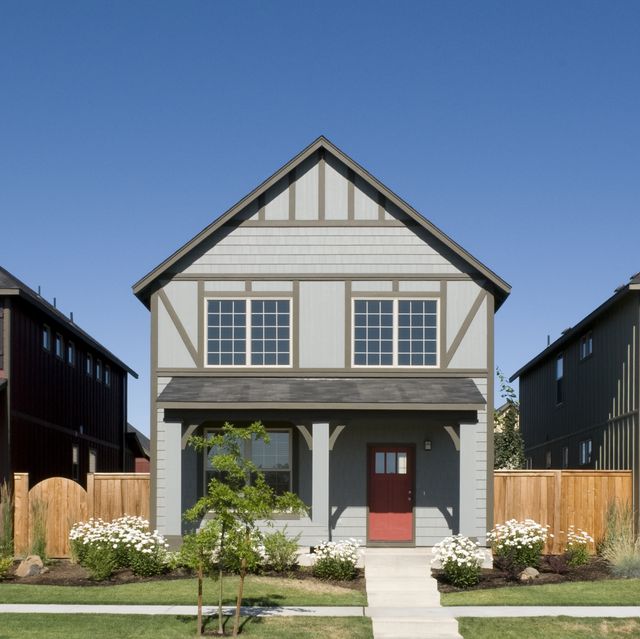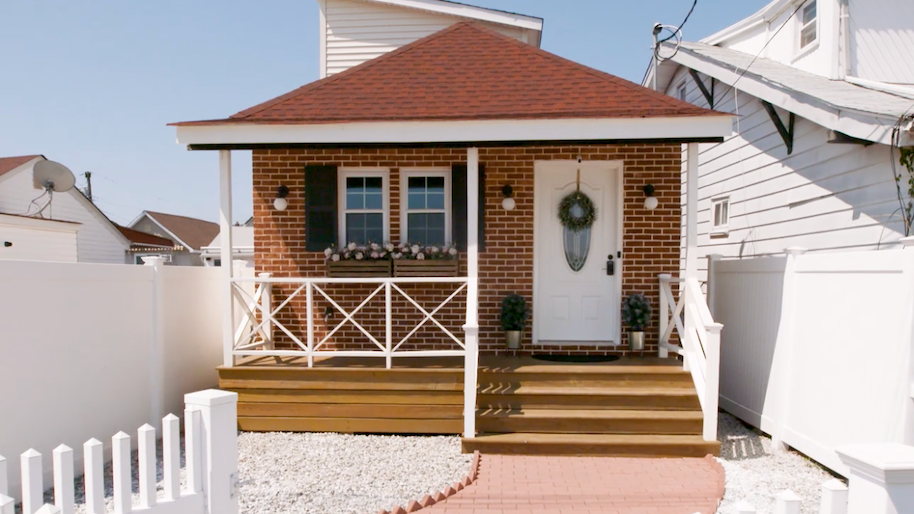Chances are, if you watch HGTV or make a habit of perusing real estate listings, you've heard of a spec home—but what exactly does that term mean? Built on speculation (hence the word!), spec homes are often referenced in media headlines spotlighting high-profile, multimillion-dollar builds with outrageous amenities (like this $46 million San Francisco spread, which boasts a 72-foot lap pool and a stainless-steel spa).
But not all spec houses—also known as inventory, feature, or move-in-ready homes—are extravagant. The term simply refers to a dwelling that is custom-built by a developer with no particular buyer in mind. Builders choose every detail of a spec home, piecing together a property they believe will be appealing to buyers given the current trends and state of the real estate market. The new constructions are then marketed as hassle-free to buyers looking to move into a never-before-lived-in abode as soon as possible. (The downside for buyers, of course, is that they get little to no say in the home’s features or how it’s built.)
It’s a risky move for developers who can potentially sink a lot of money into a project, then ultimately struggle to sell it. (Take, for instance, Nile Niami’s “The One”: a 105,000-square-foot spec megamansion in Bel-Air that was once expected to list for $500 million, but has since gone into receivership after its owner defaulted on $165 million in loans.) If builders play their cards right and strike when the demand is high, however, the payoff can be huge (case in point: this Calabasas mansion that just sold for a record-breaking $30 million).
Thinking about buying a spec home? Here’s everything you should consider before you make the big move.
Want beautiful homes? We’ve got plenty. Let’s swoon over them together.
Spec homes are custom-made—but not by the owner
A custom house is crafted from the ground up based on specifications surrounding a homeowner’s lifestyle, taste, and preferences. Spec homes are custom-built—but all design decisions are made by the developer, not the buyer, and the premade constructions are at or near completion by the time they’re shopped around. That includes everything from the architectural style and floor plan to the lighting and countertops.
"The most important thing is learning about that specific developer—including the history of what they have built in the past and the quality of their homes," says Tomer Fridman, founder of The Fridman Group, which specializes in luxury real estate sales and construction in Los Angeles. "Each developer has their own style and not all are the same in terms of quality, he adds. "It’s important to find a build that matches what the buyer is looking for."
Occasionally, if a home is still one or two months from completion, a builder might allow a homeowner to choose some of the finishing touches, such as paint colors and flooring—but that often leads to additional costs.
The bottom line: if you’re looking for a house that can be tailored to suit your specific needs, a spec home is probably not the best fit. "Someone who wants to have a hand in choosing the particular finishings, where the materials are sourced from, and have strong control over the design may find that a spec home developer is not aligned with their preferred process," Fridman explains.
A spec home isn’t the same as a pre-sale home
While spec homes usually hit the market at a near-turnkey level, pre-sale houses are sold before they’re constructed, with clients making the decision to purchase based on a builder’s plans (which are usually showcased using a model unit). Spec homes’ specs are largely set in stone, though when it comes to pre-sale properties, developers usually offer some level of customization, such as higher-quality materials or finishes (which might make them more appealing to homebuyers who want some say in the design process, but don’t want to commission a fully bespoke build).
Ordinary spec homes are far from one-of-a-kind
Though most of the over-the-top spec houses featured in the news are unique and isolated, most homes built on speculation are produced in droves within the same area. The cookie-cutter structures typically have identical lot sizes and interior layouts, simplifying the construction process and allowing builders to buy materials in bulk, reducing their costs.
Buying a spec home can be faster and easier than purchasing a custom or pre-sale property
Arguably the greatest advantage of purchasing a spec home is that it saves you from having to spend months researching and planning for a custom or pre-sale house. “You're getting a brand-new home within a 45- or 60-day close if you're doing financing,” explains Ryan Fonseca, a Century 21 agent based in Rhode Island. “Whereas if you're starting from the ground up, you could be looking at 8 to 12—even 16 months for the entire process.” So if you’re in a rush to move in, a spec home could be the answer.
In addition, custom homes often require homeowners to obtain a construction loan, “which is a much more difficult type of loan to qualify for,” Fonseca says. “With a spec home, it only requires regular financing. You could [get an FHA insured] or conventional loan—you don't have to worry about dealing with a construction loan.”
One important point to note when you buy a spec home
A spec house usually comes with a one-year builder warranty—“so buyers think they don't need to have an inspection because the Certificate of Occupancy was already issued,” Fonseca says. “I always say it may not be a bad idea to have a home inspector. Don't assume just because it's a new-build home that you can waive the inspections!”
Follow House Beautiful on Instagram.













